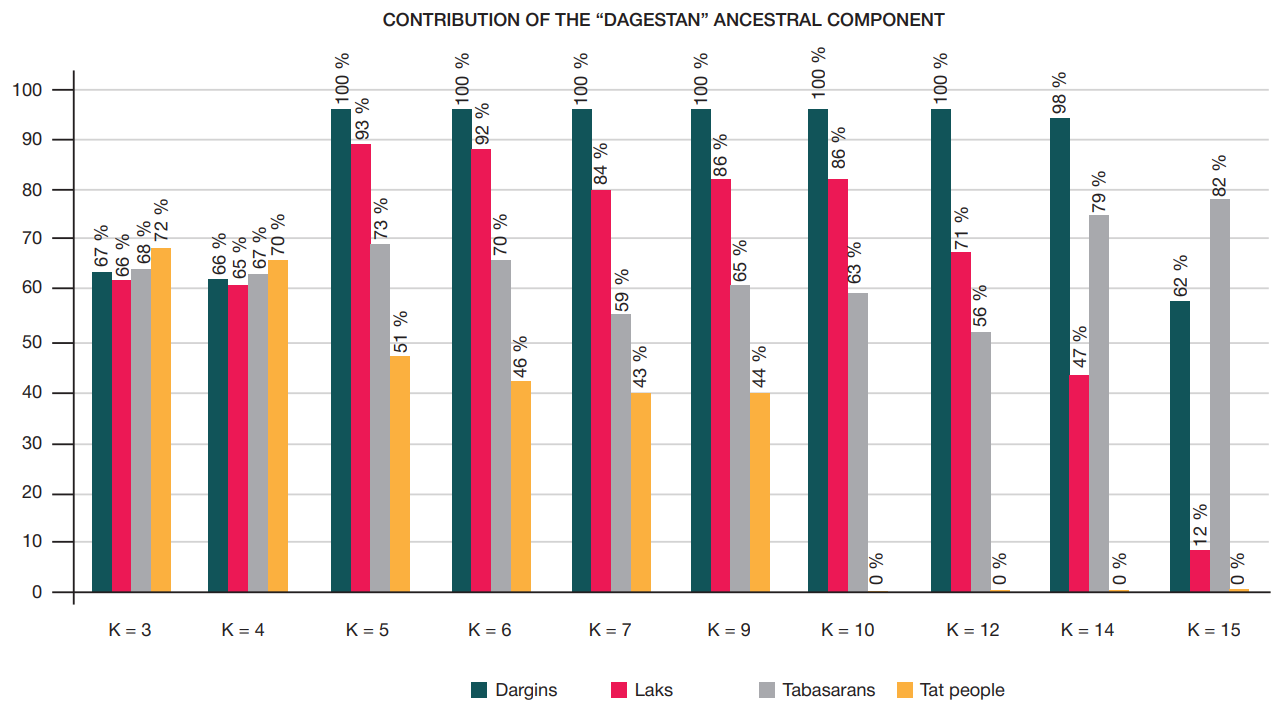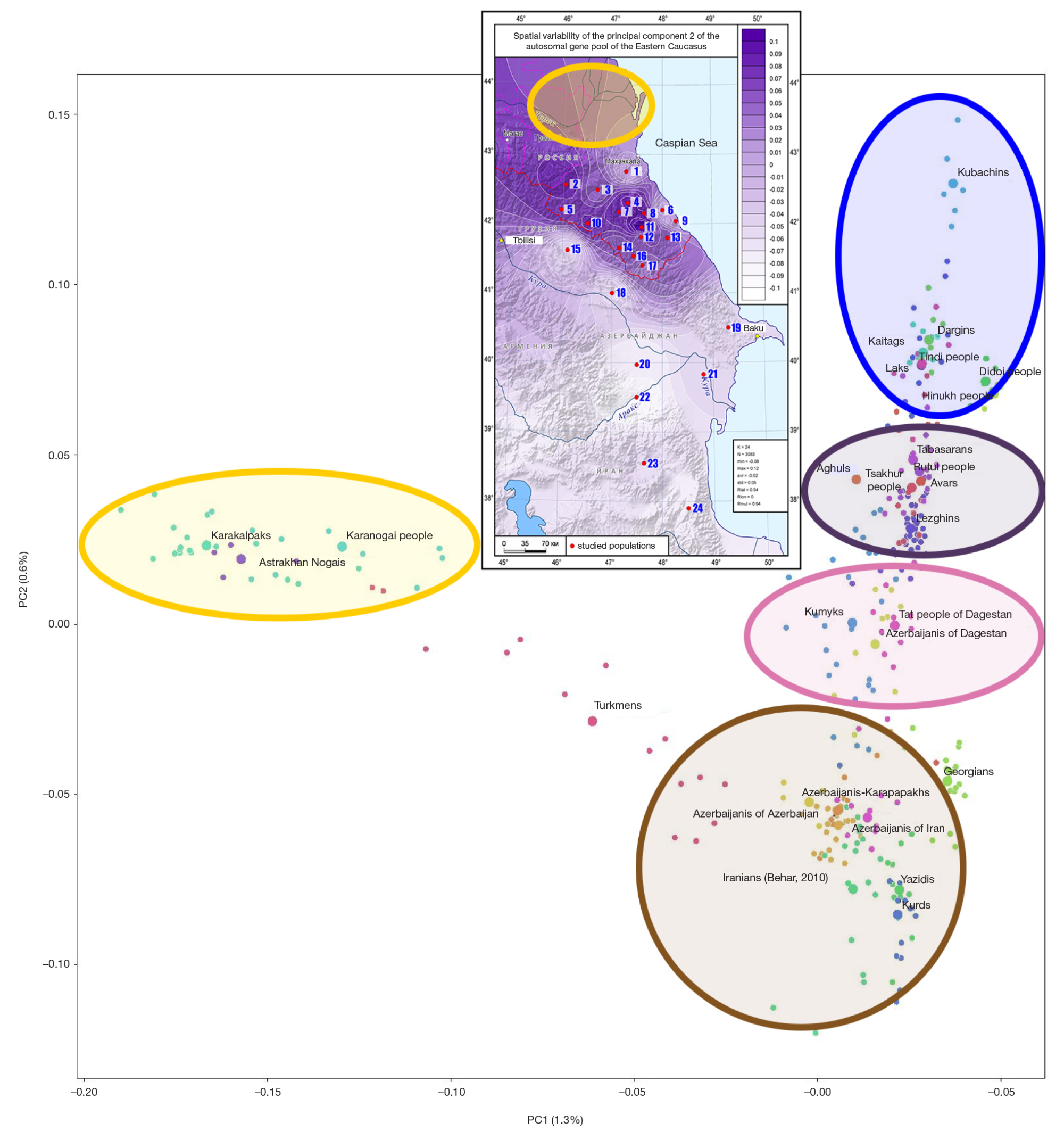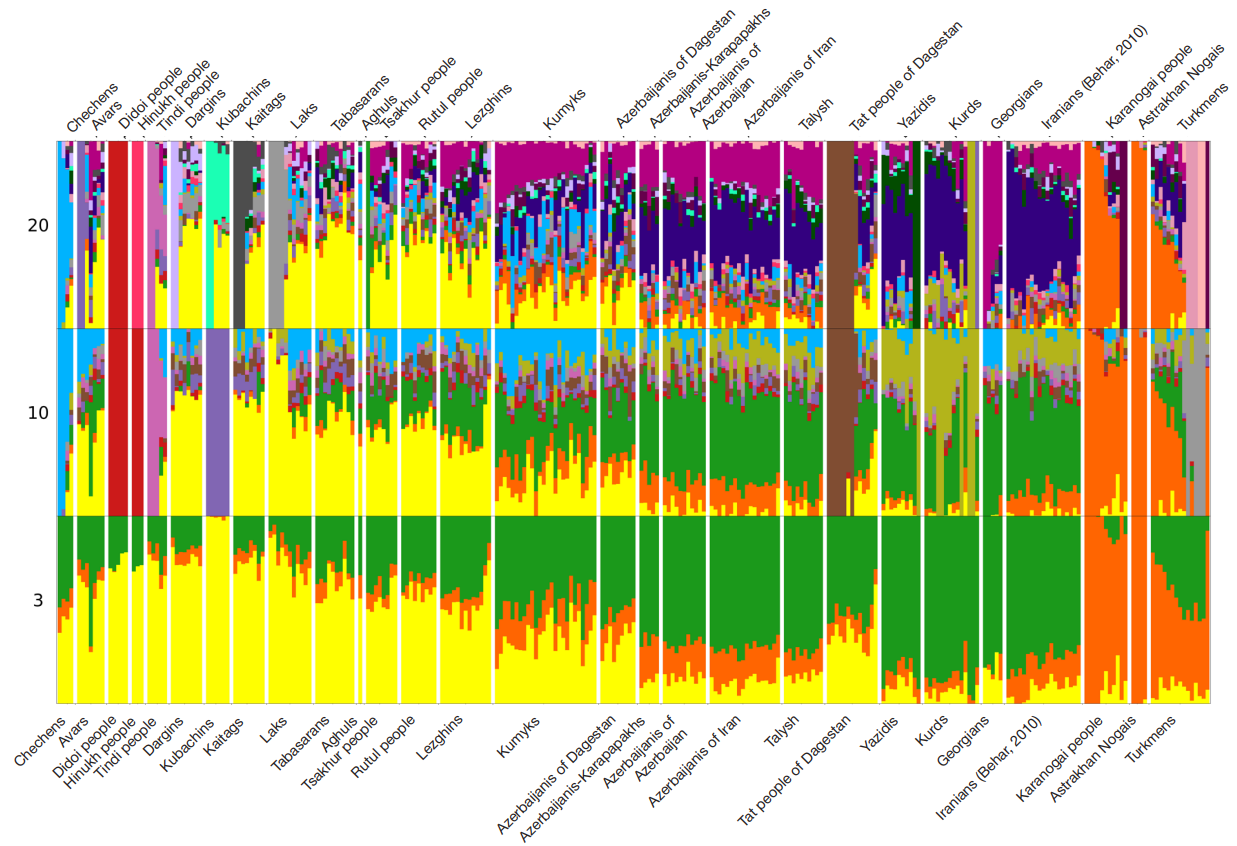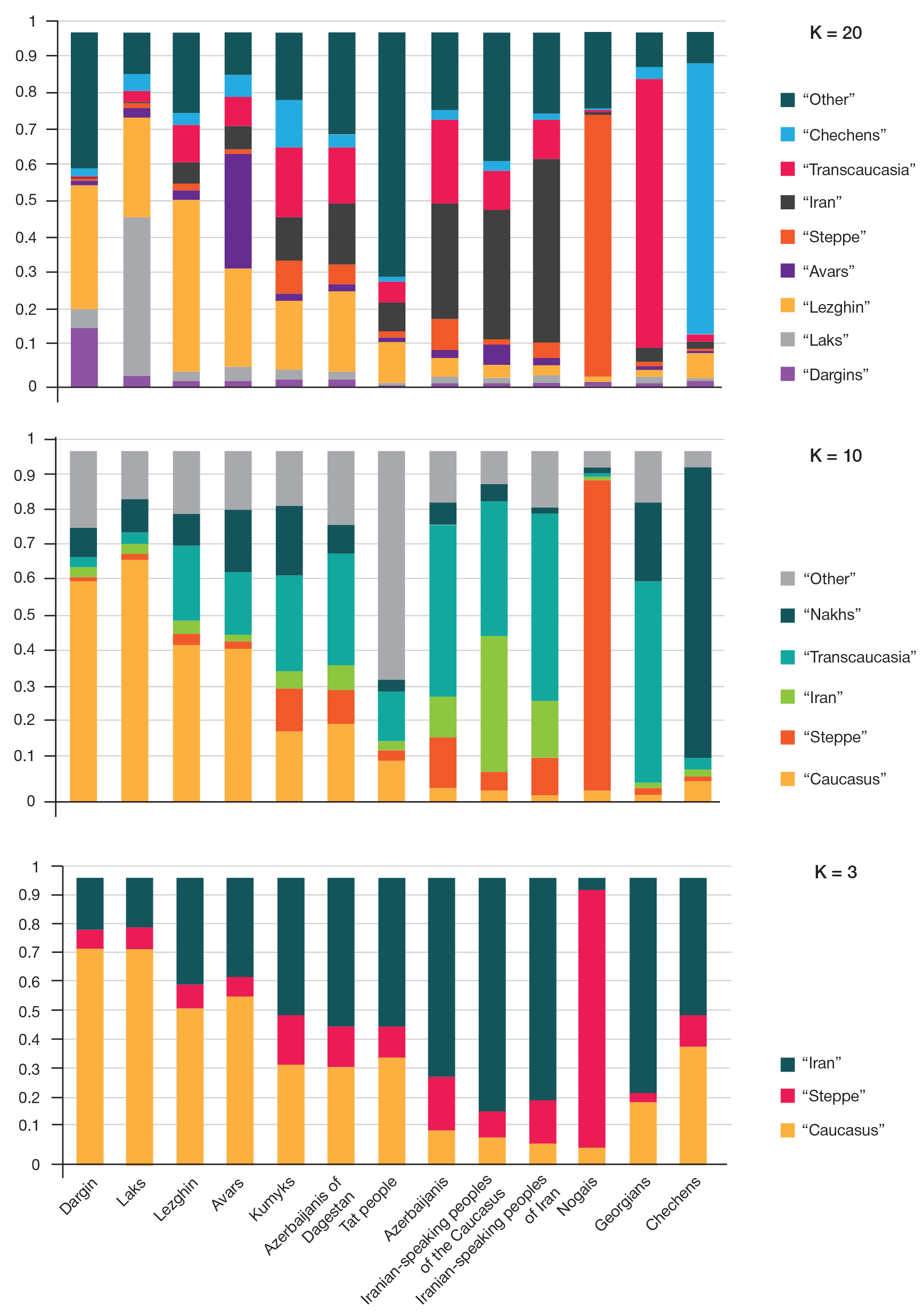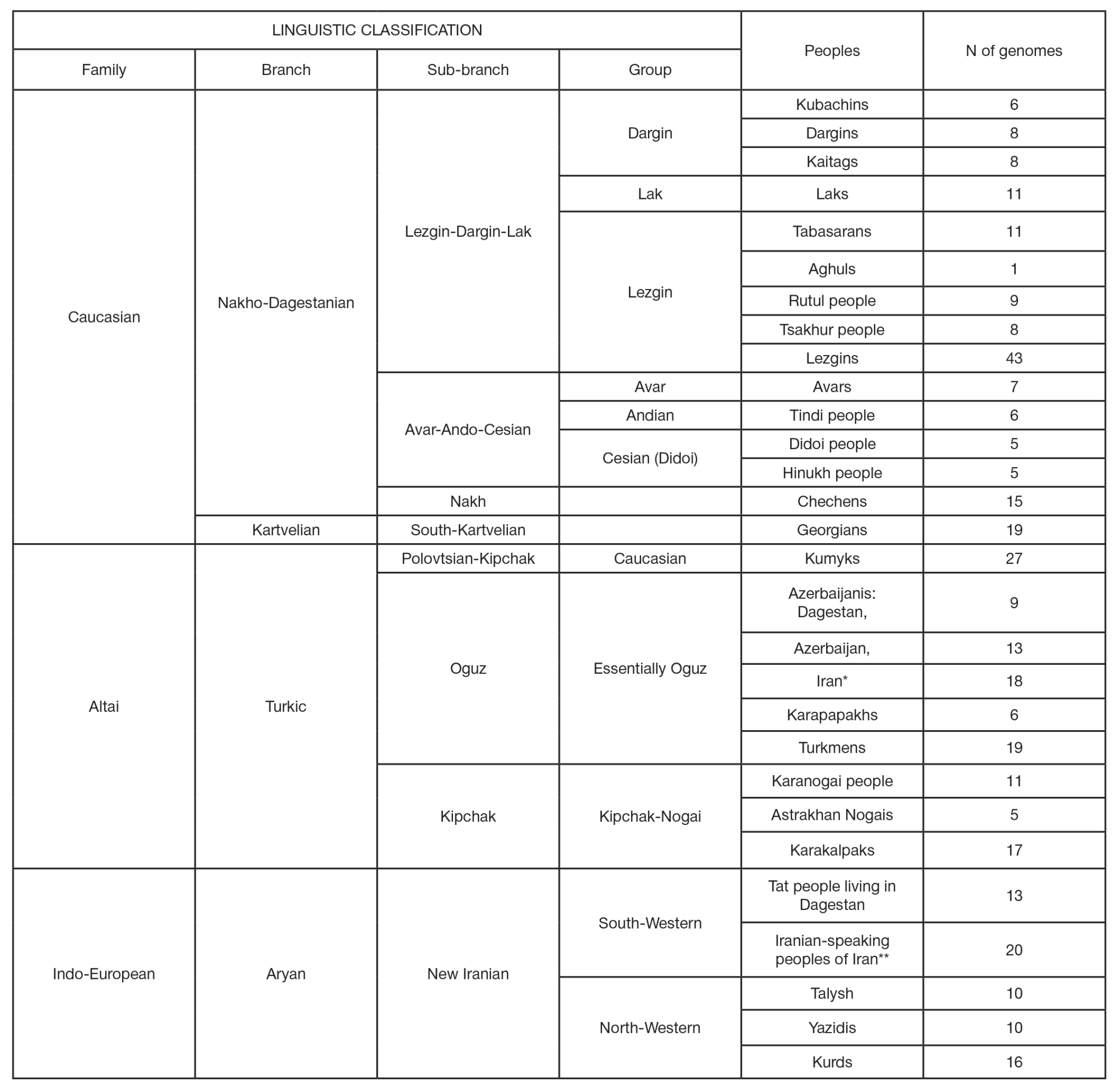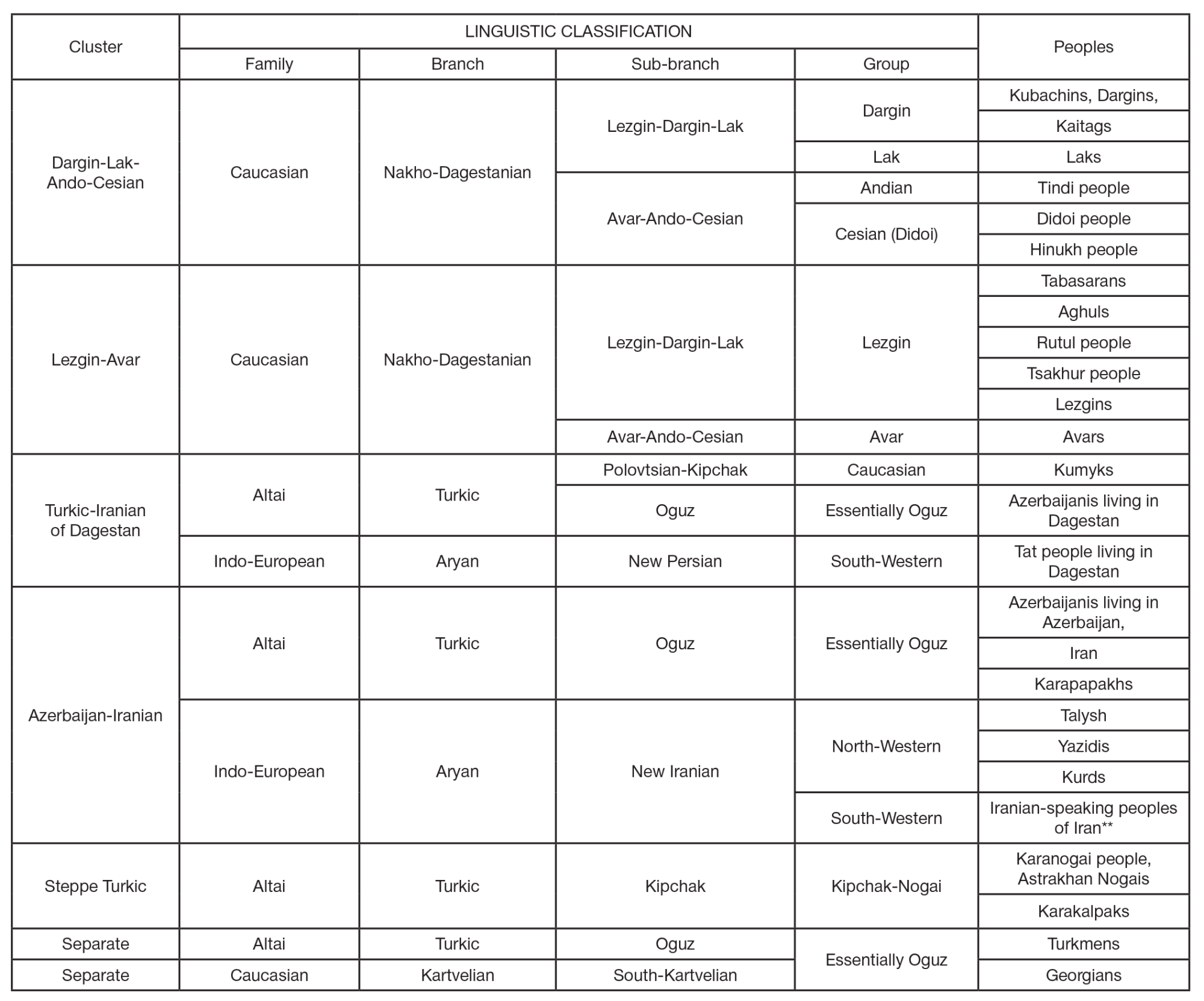
This article is an open access article distributed under the terms and conditions of the Creative Commons Attribution license (CC BY).
ORIGINAL RESEARCH
The role of Caucasian, Iranian and Steppe populations in shaping the diversity of autosomal gene pool of the Eastern Caucasus
1 Bochkov Research Centre of Medical Genetics, Moscow, Russia
2 Biobank of North Eurasia, Moscow, Russia
3 Kuban State Medical University, Krasnodar, Russia
Correspondence should be addressed: Vladimir Yu. Pylev
Moskvorechye, 1, 115522, Moscow, Russia; ur.xednay@tsurteerf
Funding: the study was supported by the RSF grant № 21-74-00156 (bioinformatics analysis of gene pools of the Eastern Caucasus and Transcaucasia), State Assignment of the Ministry of Science and Higher Education of the Russian Federation for the Research Centre of Medical Genetics (cartographic analysis, data interpretation), Biobank of North Eurasia (expedition survey).
Acknowledgements: the authors would like to thank all members of the expedition survey (sample donors) and the autonomous non-profit organization “Biobank of North Eurasia” for access to DNA collections and the genotyping results.
Author contribution: Balanovska EV — management, design, manuscript writing and expedition survey of the Dagestani peoples; Gorin IO, Petrushenko VS — bioinformatics analysis; Ponomarev GYu — work with DNA collections, cartographic analysis; Belov RO — work with DNA collections, manuscript formatting; Pocheshkhova EA — expedition survey of the Dagestani peoples; Salaev VA — organization and conducting the expedition survey of the Talysh living in Azerbaijan; Iskandarov NA — organization and conducting the expedition survey of the Azerbaijanis living in Azerbaijan; Pylev VYu — organization of genotyping, statistical analysis.
Compliance with ethical standards: the study was approved by the Ethics Commitee of the Bochkov Research Centre of Medical Genetics (protocol № 1 of 29 June 2020).
